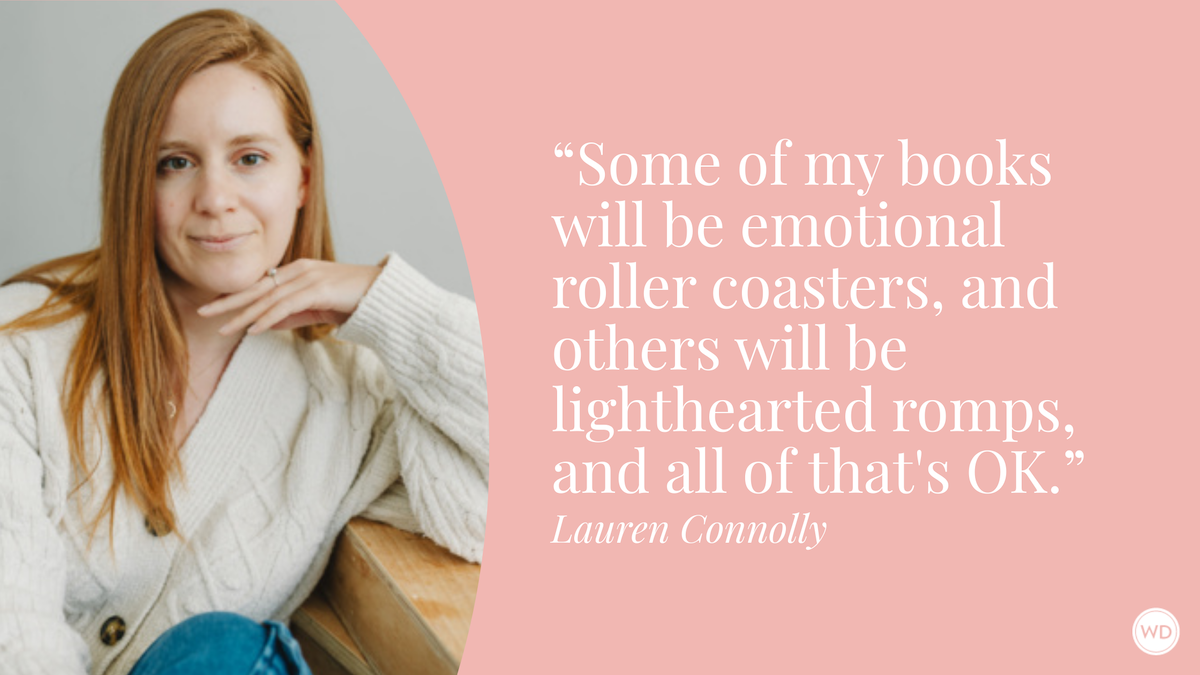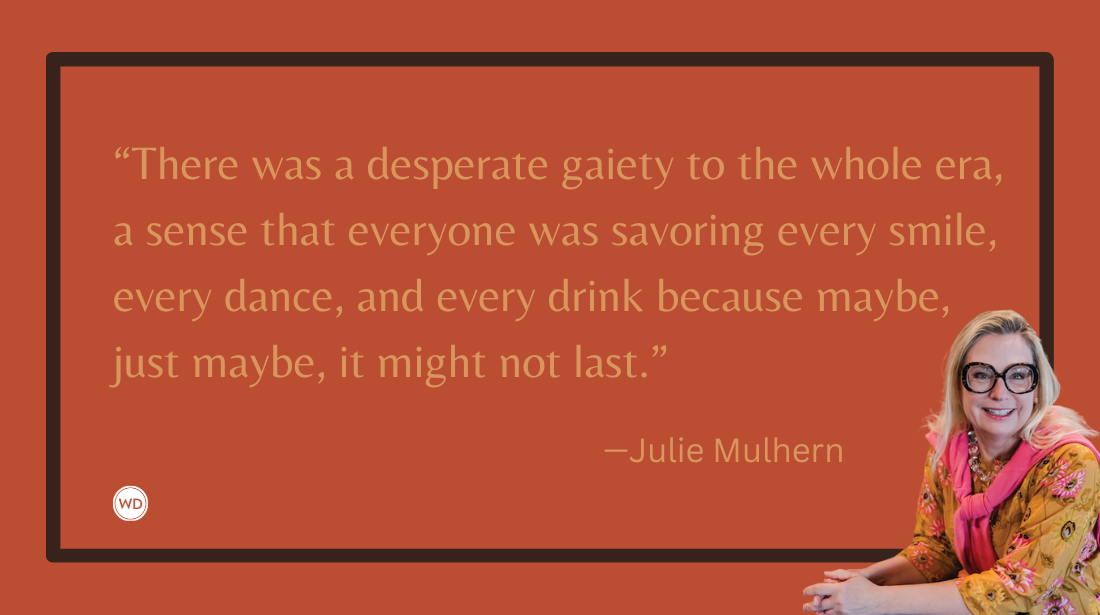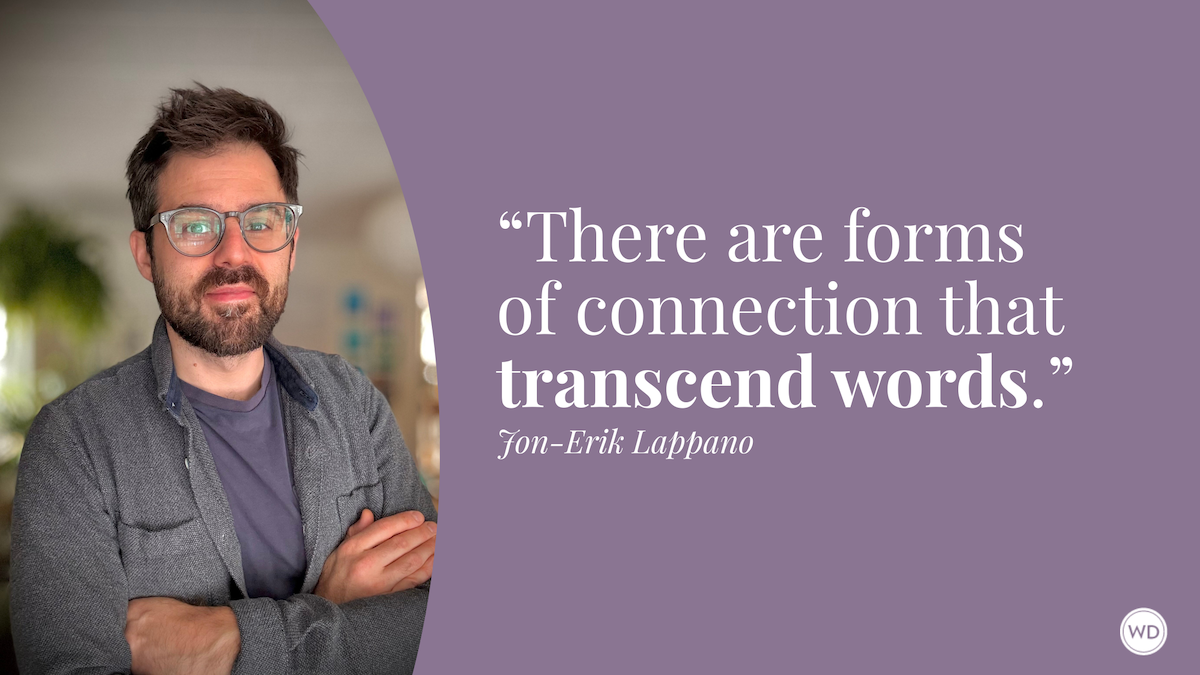Tension, Twists, and Happily Ever Afters: 5 Things I Learned in Switching Genres
Author Kathleen Barber shares five things she learned in switching genres from writing suspense to a romantic comedy.
A couple of years ago, I went on a writing retreat with some friends. We rented an Airbnb, established a schedule (morning writing, evening wine), and pulled out our laptops. It quickly became apparent that the three of them were having an absolute blast writing their rom-coms and book club fiction … while I cursed and struggled with a suspense novel that just would not come together.
Not long after I returned home, I decided to set aside not only that particular (dreadful) project, but the whole suspense genre. I wanted a piece of what my friends were doing. I wanted to laugh while I wrote, too.
I had an idea for a romantic comedy about an influencer who reconnects with her first love after her life falls apart, and thinking about writing that book made me excited—something I’d never felt with the previous suspense idea. Still, I was intimidated about stepping outside my established genre. Could I really translate my suspense-writing skills to writing romantic comedies? Would my plots fall apart without the possibility of crime or bloodshed? (We’ll never know, it seems, because the final version of Both Things Are True includes alleged financial fraud and at least one skinned knee.)
Once I got over myself and started writing, I realized the two genres aren’t actually that different. Both aim to entertain the reader, and while the type of entertainment may differ—one entertains through heart-pounding fear, the other through heart-warming relationships—both rely on a similar set of elements.
Compelling characters.
Compelling characters are an essential ingredient in all books, but perhaps even more so in suspense and rom-coms. Suspense novels need readers to care if the characters are in peril, and for that to work, readers need to first care about the characters themselves. Meanwhile, the entire point of a rom-com is two people falling in love. For readers to be invested in that love story, the characters need to be compelling and authentic.
Engaging dialogue.
Likewise, engaging dialogue is meaningful across genres but especially useful in suspense and rom-coms. Dialogue can provide clues and set up twists in suspense novels, while banter that builds the relationship between the main characters is an essential component of rom-coms. In both, dialogue works to establish the characters.
Heightened tension.
Everyone knows suspense novels need tension. The first synonym my thesaurus suggests for suspense is “tension,” after all. Suspense authors want their readers to get that heart-in-the-throat feeling. But suspense novels don’t have a monopoly on tension—romantic stories need tension, too. Tension is the uncertainty about what will happen, which in a rom-com mostly means the will-they-or-won’t-they surrounding the main characters’ relationship. (Of course, rom-coms also have that all-important sexual tension!)
Plot twists and surprises.
I confess that I worried writing a rom-com would be stifling. One of the things I appreciate about suspense is its free-wheeling nature: murders, abductions, grand larceny, it’s all game. On the other hand, romantic comedies are about, well, romance. I was intimidated at the thought of writing an engaging story without the crutches of crime.
Once I got started, though, I realized that the plot twists I was used to building into suspense novels were right at home in a rom-com. Okay, they weren’t the same plot twists, but genre-appropriate twists and surprises are just as necessary. What fun is a book if the characters fall in love right out of the gate and then move immediately to the happily ever after?
Earned endings.
What I was most concerned about, however, was the ending. This is where the genres truly diverge: Suspense readers want a twist, something they didn’t see coming, while rom-com readers demand a happily ever after.
I understood the assignment—and more than that, I wanted to deliver a happily ever after for my characters—but I worried that after spending years trying to craft shocking twists, my attempt at a happily ever after would fall flat. But I discovered something: Adhering to genre conventions is only a small part of crafting a satisfying ending. The most important thing is to earn that ending. In other words, no matter what genre you’re writing, you need to seed the ending early on.
If you’re writing a suspense novel with an unidentified stalker (hello, Follow Me), you must drop enough clues to the stalker’s identity that when you finally reveal it, the reader can say, aha! I should have guessed that’s who it was! Similarly, when you’re writing a rom-com, and you need to bring the characters together in a way that leaves your readers thinking, of course! That’s exactly how they needed to resolve their issue. You need to create a solid enough foundation that your reader believes in your ending, no matter the genre.
*****
I have no doubt there are more similarities between writing suspense novels and romantic comedies than I’ve listed here, but these were the ones that jumped out to me as I wrote Both Things Are True. Despite my anxiety about whether I could do justice to the genre, I’m pleased with the way Both Things Are True came together, and that the writing skills I honed as a suspense author translated so seamlessly to romantic comedies.
If you’re like me—an author interested in but nervous about stepping outside of your established genre—I encourage you to give it a try! You may discover that you already have most of the essential elements in your storytelling arsenal.
Check out Kathleen Barber's Both Things Are True here:
(WD uses affiliate links)









